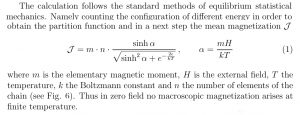An interesting global question is, to me, raised by Ernst Ising’s work in physics – (see the arxiv pre-print on his life and work if interested. https://arxiv.org/pdf/1706.01764.pdf)
Ising’s main work in the 1920’s was deriving a mathematical explanation for ferromagnetism, the ability of atoms in certain solid metals to develop aligned spins, and exhibit permanent magnetic fields in there surroundings as a result. The part of that might be of interest from a pattern science viewpoint is how his model has been successfully applied to numerous collective phenomena, both other emergent collective atomic behaviors like magnetism as well as emergent collective macroscopic behaviors like the emergence of organization in crowds.

The math, honestly, is beyond me, but there’s an interesting assumption in the work that might be discussed from a pattern science perspective, that the math rests on treating such phenomena as arising from purely local interactions.
Ising Said: “So, if we do not assume [ ] that [ ] quite distant elements exert an influence on each other [ ] we do not succeed in explaining ferromagnetism from our assumptions. It is [thus] to be expected that this assertion also holds true for a spatial model in which only
elements in the nearby environment interact with each other.”
What I suspect is that there’s more of a wave/partical type duality present, involving both local and contextual interaction
in bringing about collective organization.
In the collective phenomena we observe there is certainly has a strong local character, whether it’s snowflake formation, ecologies, social movements or probably also the punctuated equilibria of emerging species. All such collective phenomena seem to arise in relatively small centers and then spread mysteriously. They also seem to require specially primed and fertile environments, as global conditions that are receptive to the local accumulation of collective designs.
So my question is who else is talking about this pattern of nature. Is this raised in Christopher Alexander’s “The Nature of Order” or other pattern language writings? Is it raised in the work of anyone else writing in the pattern language field? More specifically, does it need to be understood to know how to describe the contexts we work in, perhaps such that a calm and receptive and so fertile context is needed to be a good host for pattern designs to flourish?
___________________
jlh
